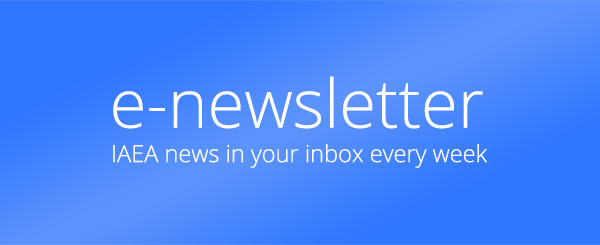Scientists see nuclear cooperation brightening in the Middle East through a breakthrough project involving Jordan, Egypt, Israel, the Palestinian Authority and other partners. Called SESAME, the project aims to build a giant machine that generates intense light beams for advanced scientific and technological research.
The IAEA is backing SESAME, with technical assistance worth US$1 million over the coming years.
"SESAME has a promising future," says Ms. Ana María Cetto, IAEA Deputy Director General and Head of Technical Cooperation. "It has challenges ahead, of course, and has seen twists and turns. But I think it is destined to benefit the region in many ways."
SESAME stands for Synchrotron-Light for Experimental Science and Applications for the Middle East. The project is sited in Jordan, near Amman, where the research facility - the first in the region - is targeted to open in 2010.
Earlier this month, the 10th SESAME Council Meeting concluded at IAEA headquarters, with members reporting significant progress in terms of financial, political, technical and administrative support. They also appointed new officers and accepted nominations from Iran and Iraq to become future members. Membership now includes Bahrain, Cyprus, Egypt, Israel, Jordan, Pakistan, the Palestine Authority and Turkey.
"We´ve finally passed the point of no return," says Prof. Herwig Schopper, the project´s departing President and former head of the European Nuclear Research Centre (CERN). He believes the project is now poised to deliver desired benefits to the Middle East region and serve as a magnet to keep and attract top scientists. (Listen to audio interview).
Synchrotron facilities operating in other regions and countries have long supported research and development that feeds advances in medicine, physics and other fields. The huge particle acclerators generate intense beams of X-rays and ultraviolet light. (See Story Resources).
Since 2006, the IAEA has helped train future SESAME users and operators in the safe and secure commissioning and operation of the SESAME facility. In addition, IAEA representatives are on selection panels for scientific fellowships and will participate in future meetings of users.
"The IAEA´s support for SESAME is crucial at both a scientific and political level," emphasizes Prof. Khaled Toukan, SESAME Director. Over the next three years, he says the total investment in training for SESAME staff, scientists and engineers coming from the IAEA will amount to US $920,000. (Listen to audio interview).
During a visit to the region in April 2007, IAEA Director General Mohamed ElBaradei visited the SESAME site in Jordan.
Background:
At the Vienna meeting, SESAME Council members appointed Sir Christopher Llewellyn Smith as the project´s new President and Dr. Amor Nadji as Technical Director. It also accepted the two nominations for membership from Iran and Iraq. The next Council meeting is in Cyprus later this year.
Internationally, the project is run under the auspices of the United Nations Educational, Social and Cultural Organization (UNESCO).
See Story Resources for more information on IAEA-supported projects in the Middle East and other regions.


